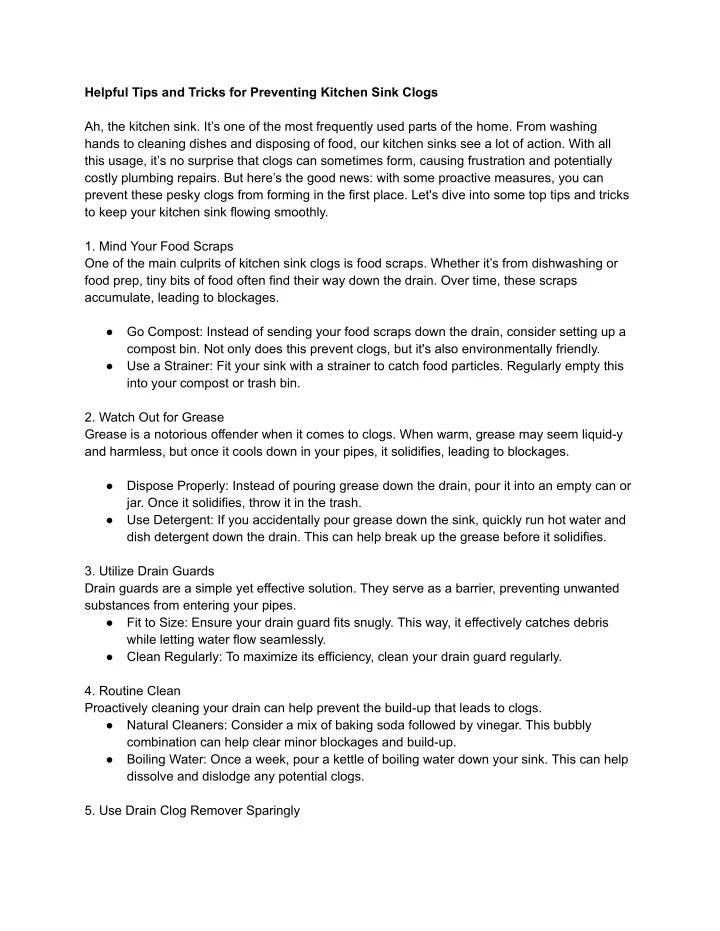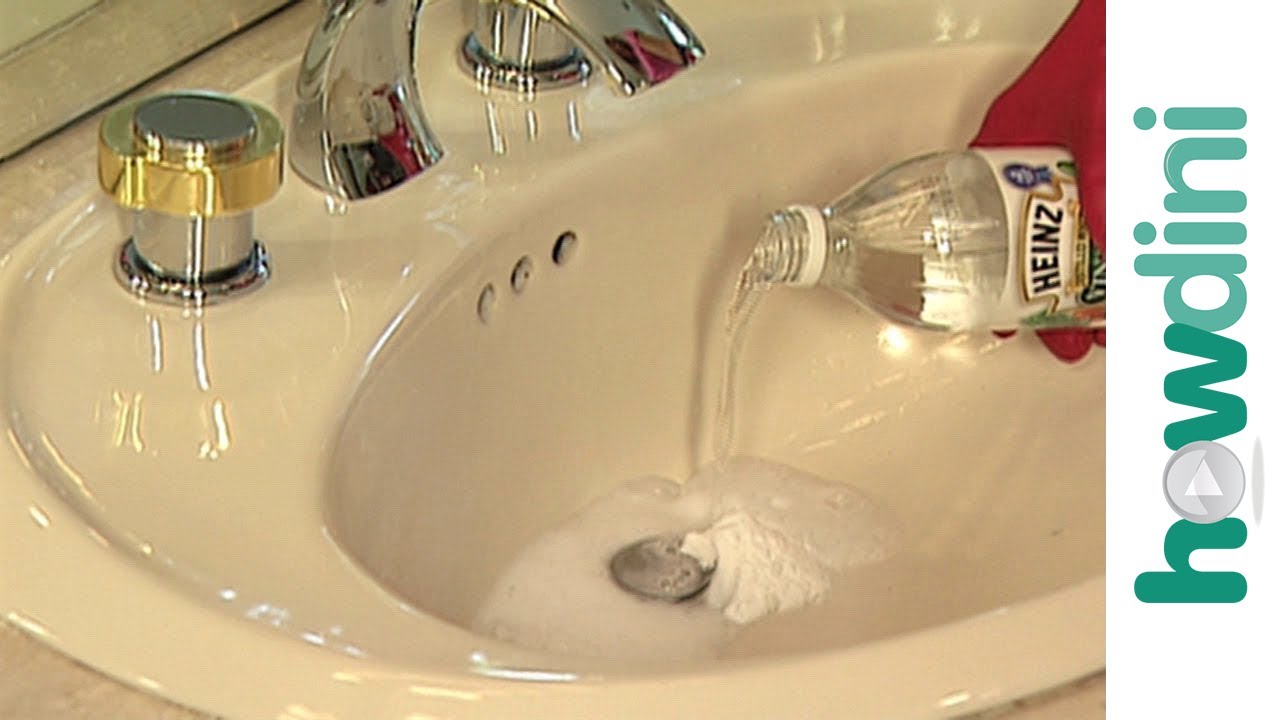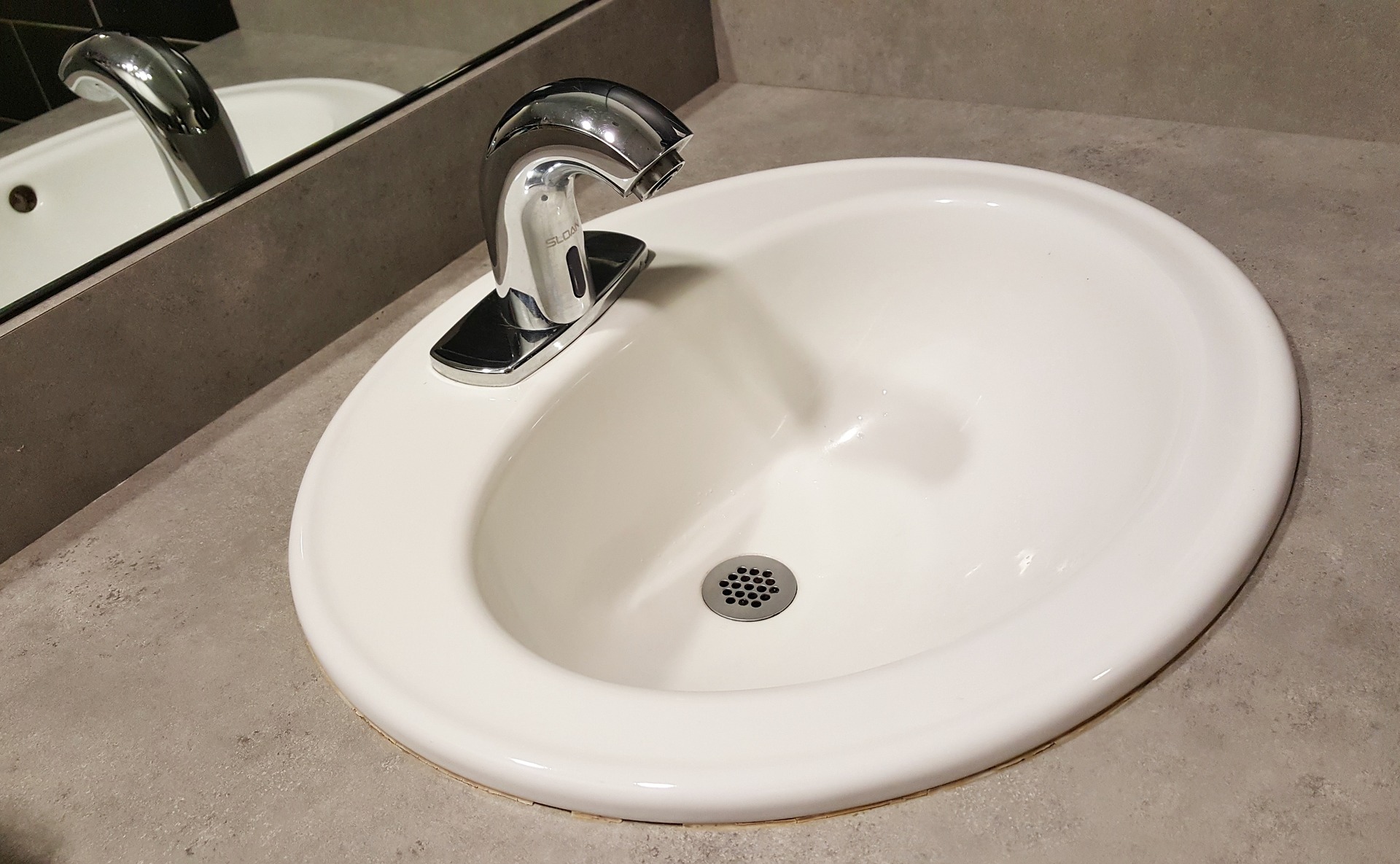If you're experiencing a clog in your bathroom sink overflow, you're not alone. This is a common plumbing issue that can be frustrating and inconvenient. However, with the right tools and techniques, you can easily unclog your bathroom sink overflow and get your drain running smoothly again. In this article, we'll discuss 10 simple steps to follow for unclogging a bathroom sink overflow.Unclog Bathroom Sink Overflow: 10 Simple Steps to Follow
Before we dive into the steps, it's important to understand how the bathroom sink overflow drain works. The overflow drain is located under the sink's rim and is designed to prevent water from overflowing onto your countertop. However, over time, this drain can become clogged with hair, soap scum, and other debris. Here's how to unclog it:How to Unclog a Bathroom Sink Overflow Drain
There are a few DIY solutions you can try before calling in a professional plumber. One popular method is using a mixture of baking soda and vinegar. Simply pour half a cup of baking soda down the overflow drain, followed by a cup of vinegar. Let it sit for 15 minutes, then pour hot water down the drain to flush out any debris.DIY Solutions for Unclogging a Bathroom Sink Overflow
Baking soda and vinegar are not only effective for unclogging bathroom sink overflows, but they are also environmentally friendly and won't damage your pipes. The chemical reaction between the two ingredients creates a powerful foaming action that can break up stubborn clogs.Unclogging a Bathroom Sink Overflow with Baking Soda and Vinegar
Knowing the common causes of bathroom sink overflow clogs can help you prevent them in the future. Some of the main culprits include hair, soap scum, toothpaste, and hygiene products like cotton swabs and dental floss. These items can easily get caught in the overflow drain and cause a blockage.5 Common Causes of Bathroom Sink Overflow Clogs
If the baking soda and vinegar method doesn't work, you can try using a plunger to unclog your bathroom sink overflow. First, remove the stopper and cover the overflow drain with a wet cloth. Then, place the plunger over the sink drain and push down and up in a quick motion. This will create suction and dislodge the clog.Using a Plunger to Unclog a Bathroom Sink Overflow
Prevention is always better than having to deal with a clogged bathroom sink overflow. Some simple tips and tricks include using a drain cover to catch hair and debris, regularly cleaning out the overflow drain with a brush or vinegar, and avoiding pouring grease or oil down the drain.Preventing Bathroom Sink Overflow Clogs: Tips and Tricks
If all else fails, it may be time to call in a professional plumber. They have the tools and expertise to unclog even the most stubborn bathroom sink overflows. They can also inspect your pipes and make any necessary repairs to prevent future clogs.Professional Plumbing Services for Unclogging Bathroom Sink Overflows
If you prefer to use natural remedies, there are a few other options you can try. These include using a mix of salt and baking soda or pouring boiling water down the drain. Just be cautious with boiling water, as it can crack porcelain sinks.Natural Remedies for Unclogging a Bathroom Sink Overflow
Regularly cleaning and maintaining your bathroom sink overflow can go a long way in preventing clogs. Use a brush or vinegar to remove any buildup of hair and soap scum. You can also pour hot water down the drain once a week to help keep it clear. In conclusion, unclogging a bathroom sink overflow may seem like a daunting task, but with the right knowledge and tools, it can be done easily. Remember to try DIY solutions first, and if those don't work, don't hesitate to call in a professional plumber. With regular maintenance and a few preventative measures, you can keep your bathroom sink overflow running smoothly for years to come.How to Clean and Maintain a Bathroom Sink Overflow to Prevent Clogs
Why You Need to Unclog Your Bathroom Sink Overflow

The Importance of a Well-Functioning Bathroom Sink
 Your bathroom sink is an essential part of your daily routine, whether you're getting ready for work or winding down for the day. It's where you brush your teeth, wash your face, and perform other personal hygiene tasks. However, a clogged bathroom sink overflow can disrupt this routine and cause inconvenience and frustration. This is why it's important to address clogs in a timely manner to keep your bathroom sink functioning properly.
Your bathroom sink is an essential part of your daily routine, whether you're getting ready for work or winding down for the day. It's where you brush your teeth, wash your face, and perform other personal hygiene tasks. However, a clogged bathroom sink overflow can disrupt this routine and cause inconvenience and frustration. This is why it's important to address clogs in a timely manner to keep your bathroom sink functioning properly.
The Potential Causes of a Clogged Bathroom Sink Overflow
 There are many reasons why your bathroom sink overflow may become clogged. Hair, soap residue, and toothpaste are common culprits that can build up and block the drain. Other factors such as mineral deposits and foreign objects can also contribute to clogs. Additionally, older plumbing systems or improper installation can make your bathroom sink more susceptible to clogs.
There are many reasons why your bathroom sink overflow may become clogged. Hair, soap residue, and toothpaste are common culprits that can build up and block the drain. Other factors such as mineral deposits and foreign objects can also contribute to clogs. Additionally, older plumbing systems or improper installation can make your bathroom sink more susceptible to clogs.
The Dangers of Ignoring a Clogged Bathroom Sink Overflow
 Ignoring a clogged bathroom sink overflow can lead to more serious problems in the future. As the clog continues to build up, it can cause pressure on the pipes and potentially lead to leaks or burst pipes. This can result in costly repairs and water damage to your bathroom. Additionally, clogged drains can create an ideal environment for bacteria and mold to grow, which can be harmful to your health.
Ignoring a clogged bathroom sink overflow can lead to more serious problems in the future. As the clog continues to build up, it can cause pressure on the pipes and potentially lead to leaks or burst pipes. This can result in costly repairs and water damage to your bathroom. Additionally, clogged drains can create an ideal environment for bacteria and mold to grow, which can be harmful to your health.
The Solution: Unclogging Your Bathroom Sink Overflow
 Fortunately, unclogging a bathroom sink overflow is a relatively simple task that can be done with a few household items or with the help of a professional plumber. The first step is to remove the excess water from the sink and then use a plunger or a drain snake to clear the clog. You can also try using a mixture of baking soda and vinegar to break down the blockage.
Fortunately, unclogging a bathroom sink overflow is a relatively simple task that can be done with a few household items or with the help of a professional plumber. The first step is to remove the excess water from the sink and then use a plunger or a drain snake to clear the clog. You can also try using a mixture of baking soda and vinegar to break down the blockage.
Preventing Future Clogs
 To avoid dealing with a clogged bathroom sink overflow in the future, there are some preventative measures you can take. Install a drain cover to catch hair and other debris, and regularly clean the drain with a mixture of baking soda and hot water. You can also avoid pouring grease, oil, and other substances down the drain to prevent buildup.
In conclusion
, a clogged bathroom sink overflow is a common household issue that can cause inconvenience and potential damage if left unaddressed. By understanding the causes and taking preventative measures, you can keep your bathroom sink functioning properly and maintain a clean and hygienic environment in your home. If you encounter a stubborn clog, don't hesitate to seek the help of a professional plumber. Don't let a clogged bathroom sink overflow disrupt your daily routine, take action and keep your bathroom in top shape.
To avoid dealing with a clogged bathroom sink overflow in the future, there are some preventative measures you can take. Install a drain cover to catch hair and other debris, and regularly clean the drain with a mixture of baking soda and hot water. You can also avoid pouring grease, oil, and other substances down the drain to prevent buildup.
In conclusion
, a clogged bathroom sink overflow is a common household issue that can cause inconvenience and potential damage if left unaddressed. By understanding the causes and taking preventative measures, you can keep your bathroom sink functioning properly and maintain a clean and hygienic environment in your home. If you encounter a stubborn clog, don't hesitate to seek the help of a professional plumber. Don't let a clogged bathroom sink overflow disrupt your daily routine, take action and keep your bathroom in top shape.












:max_bytes(150000):strip_icc()/freshen-and-unclog-drain-with-baking-soda-1900466-22-bbf940b70afa4d5abef0c54da23b1d3f.jpg)






















































































